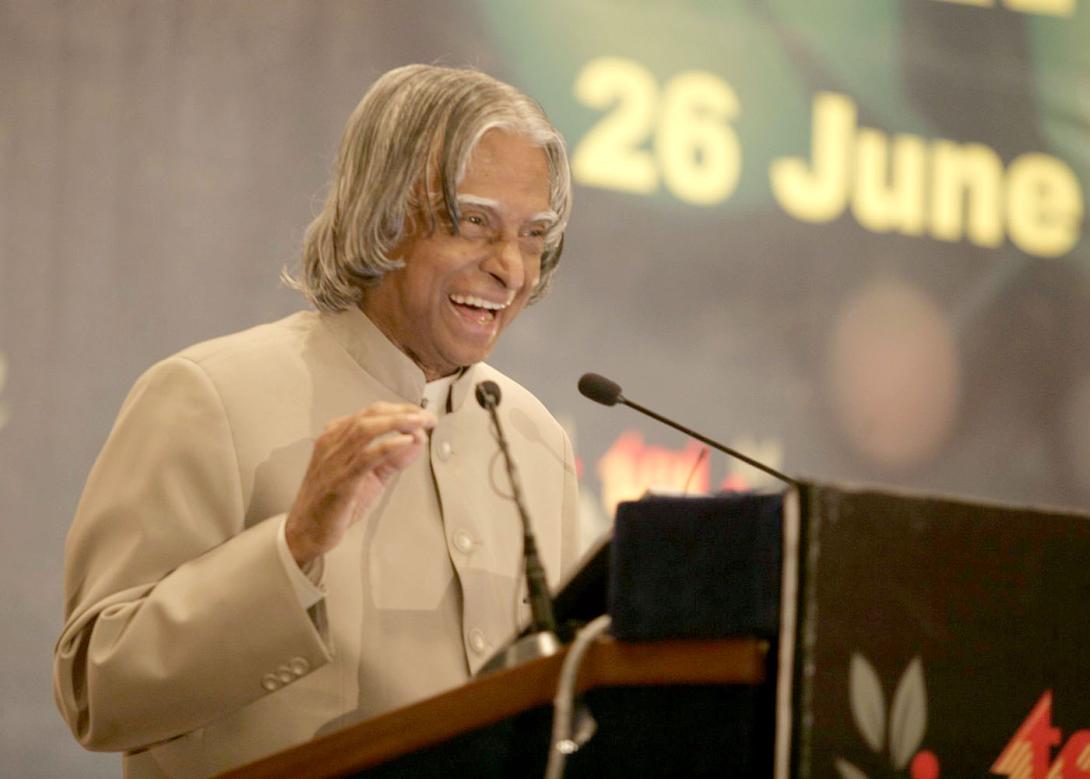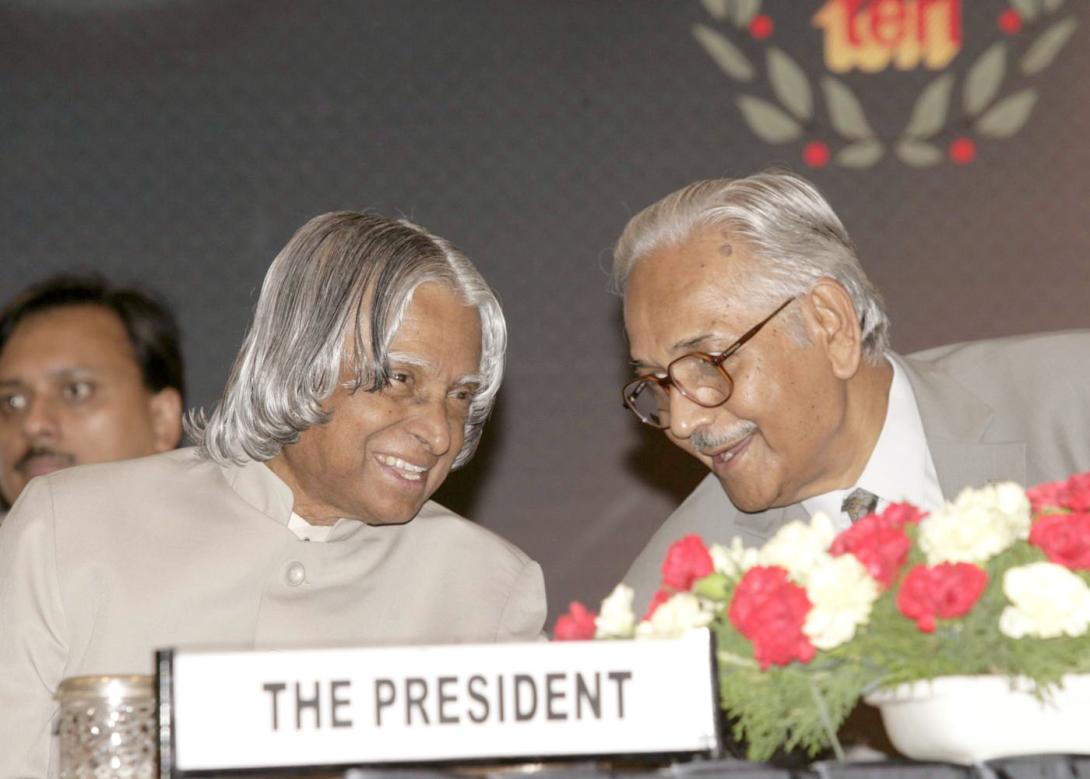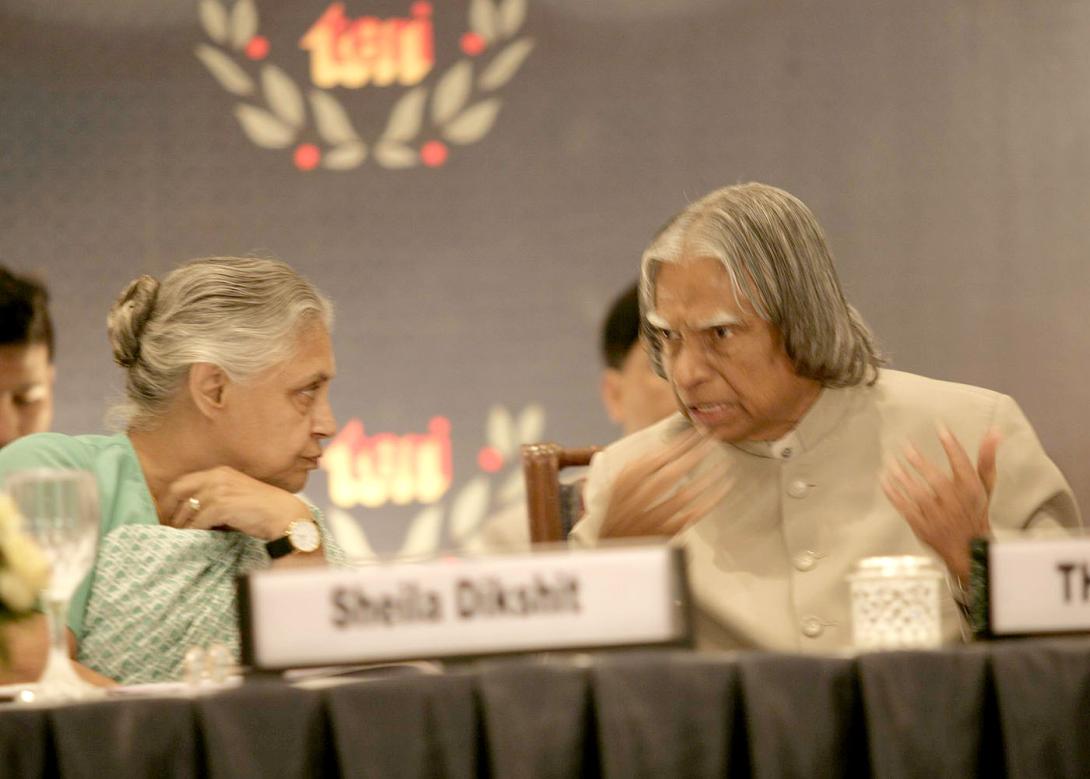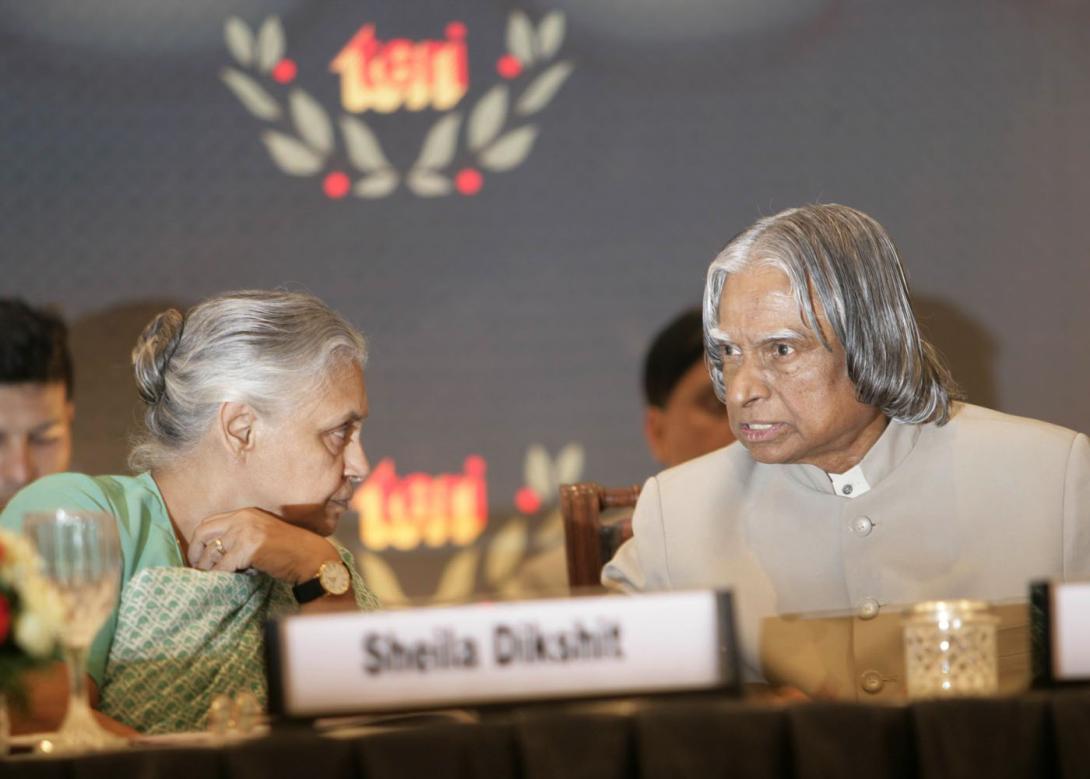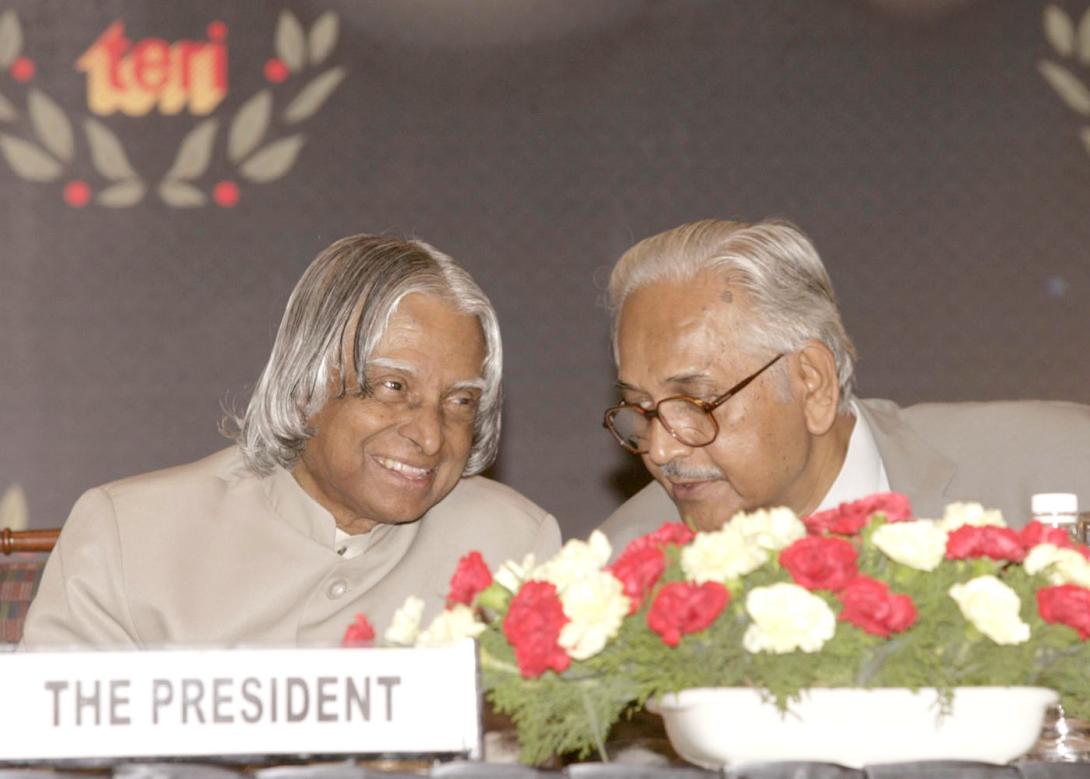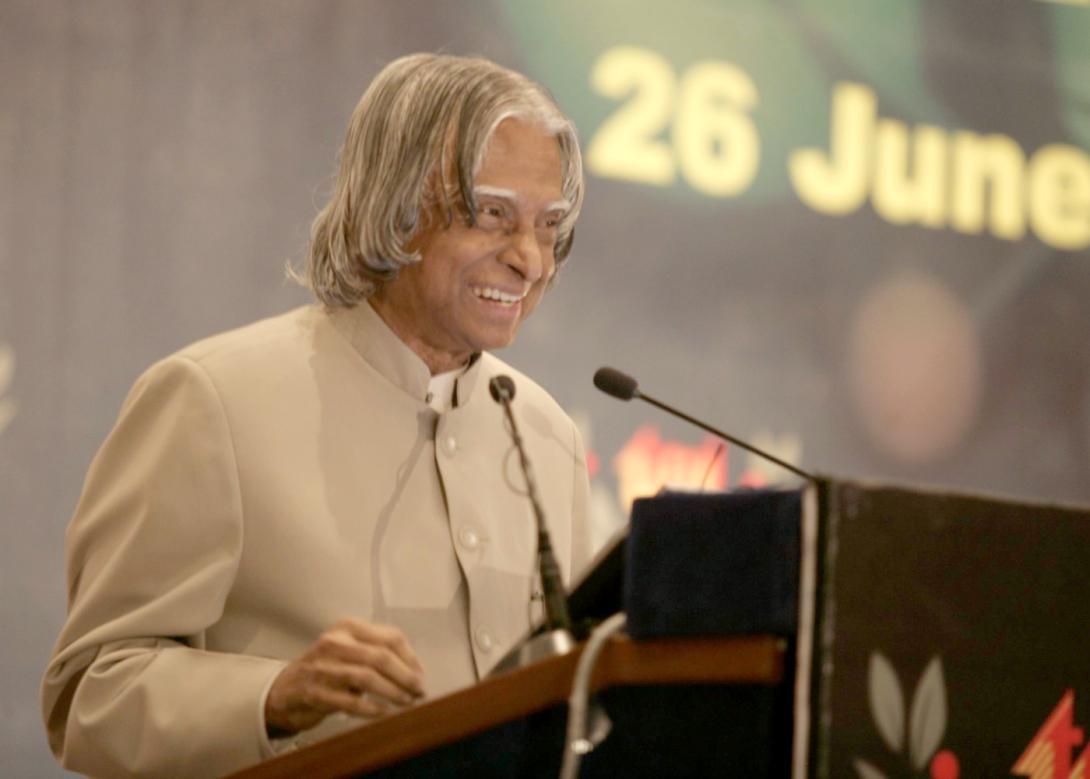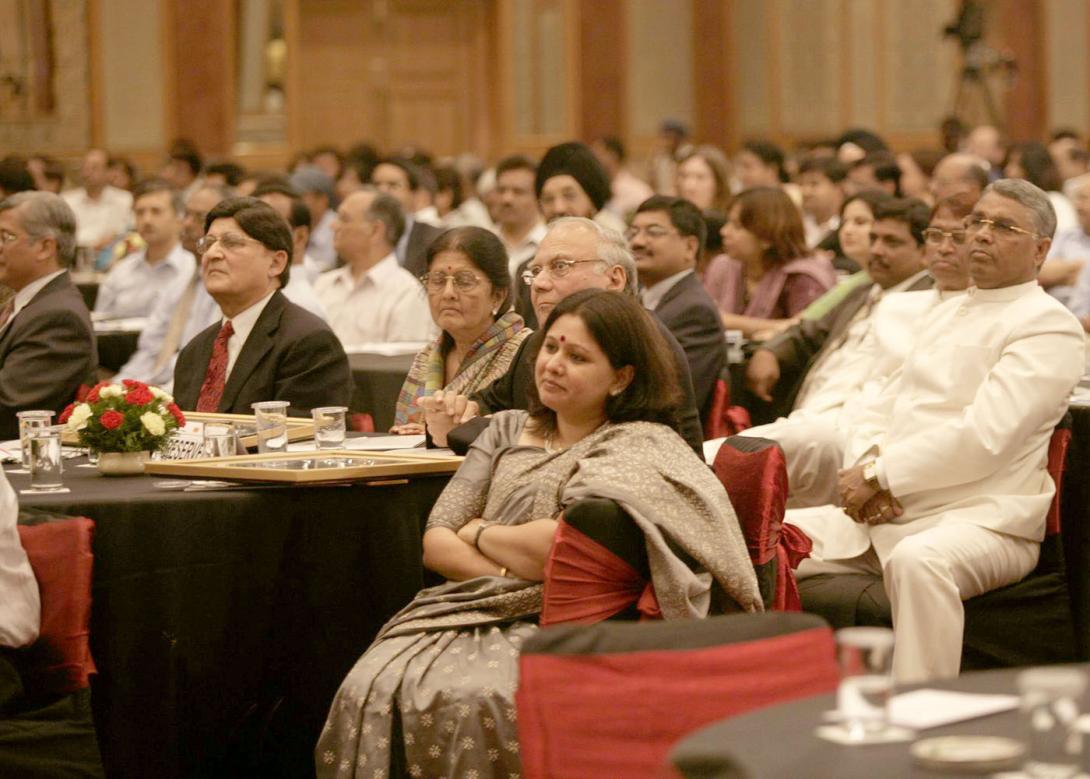Address at the 5th TERI Corporate Awards Ceremony, New Delhi
New Delhi : 26-06-2006
Evolution of National Energy Independence Missions
"Courage to think different, Leads to success in missions"
I am indeed delighted to participate in the "The Energy and Resources Institute Corporate Awards" function organized by TERI. I congratulate the award winners and greet the industry chiefs, environmentalists, societal reformers, educationists, entrepreneurs, scientists, technologists, and distinguished guests. I am happy to note that corporate award scheme has been instituted by TERI for recognizing excellence in Environmental protection and fulfilling the social responsibility. It should have two purposes. The first impact has to be to motivate many in the corporate sector towards certain special missions. The second impact has to be to motivate the teams of TERI itself towards people oriented new missions. Very rarely an organization has missions for contributing towards development and environmental upgradation simultaneously. TERI is uniquely placed in this regard and can definitely think differently and move on a path hitherto not explored. Since I am of the view that the nation has to come out from the policy of energy security to energy independence, I would like to share with you on this beautiful occasion some thoughts on "Evolution of National Energy Independence Missions".
Energy Independence
In the field of energy, many innovations are taking shape. The world energy forum has predicted that fossil based oil, coal and gas reserves will last for less than ten decades. The energy is an important parameter for development. Continuously increasing cost of oil sourced from fossil material prompted many groups in the world to seriously consider the possible energy options. Based on our study, I have discussed about Energy Independence as part of my Independence Day Address to the nation, on 15 August 2005. There, I mentioned that Energy Independence has to be our nation?s highest priority. Our target is to achieve Energy Security by 2020 leading to Energy Independence by 2030 and beyond. Of course there were many discussions nationally as well as internationally on this subject. I would like to suggest certain actions to be taken on the energy missions for contributing towards energy independence in India.
Structure of Energy Sources
Based on the progress visualized for the nation during the next two decades, the power generating capacity has to increase to 400,000 MW by 2030 from the existing hundred and thirty thousand Megawatts. This has been arrived at taking into account the use of efficient transmission and distribution system and minimization of other losses. Energy independence has got to be achieved through three different sources namely hydel capacity, nuclear power and non-conventional energy sources primarily through solar energy, apart from thermal power. The hydel capacity generated through normal water sources and inter-linking of rivers is expected to contribute an additional 50,000 MW. Large scale solar energy farms of hundreds of megawatts capacity in certain number could contribute around 55,000 MW. The nuclear power plants should have a target of 50,000 MW of power. The balance 115,000 MW has to be generated through the conventional thermal plants through coal and gas and other renewable sources of energy such as Wind power, Biomass, Power through municipal waste and solar thermal power. The most significant aspect, however would be that the power generated through renewable energy technologies has to be increased to 25% against the present 5%. Let me discuss about the profile of renewable energy systems.
The energy mix for energy independence envisages use of four routes: (a) Hydel + Thermal till coal availability (b) Solar power using high efficiency CNT based SPV cells (c) Thorium based nuclear reactors (d) Bio-fuel for transportation sector.
Firstly I would like to talk to you on Solar Energy.
Solar Energy
Solar energy in particular has the potential for massive applications in the agricultural sector, where farmers need electricity exclusively in the daytime. This could be the primary demand driver for solar energy. Our farmers demand for electric power today is significantly high, which makes solar energy economical due to its large scale. Shortages of water, both for drinking and farming operations, can be met by large scale seawater desalination and pumping inland using solar energy, supplemented by bio-fuels wherever necessary.
We need to embark on a programme in solar energy systems and technologies, for both large, centralized applications as well as small, decentralized requirements concurrently, for applications in both rural and urban areas.
In this context, I am glad to note the good work undertaken by TERI along with Ramakrishna Mission in partnership with State Government and NGO sector in empowering the women of the Sunderban?s to promote the use of solar power. This pilot project has successfully created viable enterprises, targeting women entrepreneurs. These enterprises have been created not only to provide solar PV-based services in remote and interior villages, but also to provide repair and maintenance services to already existing products and systems. In view of Sunderban?s remote location, difficult landscape and inadequate infrastructure, energy interventions based on alternate technologies such as solar power have become viable. About 20% of the area?s population, approximately 216,000 people are currently using solar PV electricity. I visited the solar villages in Sundarbans in 2006. Such experiences auger well to create a "rural household solar mission" which will provide LED based nano crystal lighting system through small solar PV Power Plants to the 70 millions households who are presently using kerosene oil for lighting. I am sure that this project will provide a very good business opportunity for energy industrialists.
Carbon Nano Tube (CNT) based solar cells for higher efficiency: The low efficiency of conventional Photo Voltaic (PV) cells has restricted the use of solar cells, for large power generation application. Research has shown that the Gallium Arsenide (GaAs) based PV cell with multi junction device could give maximum efficiency of less than 30%. Hence it is essential to launch a research mission on Carbon Nano Tube (CNT) based PV cell which has the potential for higher level of efficiency.
Recent research has shown that the alignment of the CNT with the polymer composites substrate is the key issue and this aligned CNT based PV cells would give very high efficiency in photovoltaic conversion. In this process, the researchers could achieve the efficiency of about 50% at the laboratory scale. Our scientists have to take up this challenge and come up with the development of a CNT based PV cell with an efficiency of at least 50% within the next three years so that it can go into commercial production within five years. Solar power generation using high efficiency CNT based solar power photovoltaic cells will be highly competitive, compared to other forms of energy generation systems.
In addition, we should work on solar thermal power plants which use the thermal energy produced by the sun to generate electricity. They consist of three main components: mirrors, receivers and turbine technology. The power plants are highly efficient, producing a large quantity of green electricity with minimal environmental impact. A 64 MW solar power plant is being commissioned in Boulder City, Nevada which is expected to provide power to the grid by 2007. Our entrepreneurs need to work on these technologies. There are lots of opportunities for research in fundamental science in this area and I would like to suggest the energy experts, environmentalists and entrepreneurs participating in this TERI function to work in a coherent, consorted way with a mission mode programme to achieve faster realization of commercial availability of CNT based PV cell with 50% efficiency and solar thermal power plants.
Let me now discuss with you on the power generation through nuclear energy.
Nuclear Energy
So far, the present nuclear power capacity of 14 reactors which is 2700 MW is expected to go to 7400 MW by 2010 with the completion of nine reactors which are now in progress. Eventually as per present plan of BARC and Nuclear Power Corporation the capacity by 2020 is expected to be increased to 24,000 MW. There is a need to plan right from now to increase this capacity to 50,000 MW by 2030.
Nuclear power generation has been given a thrust by the use of uranium based fuel. However to meet the increased needs of nuclear power generation, it is essential to pursue the development of nuclear power using Thorium, reserves of which are higher in the country. Technology development has to be accelerated for Thorium based reactors. Thorium is a non fissile material. For conversion of Thorium and maximizing its utilization development of Fast Breeder Reactor has been rightly taken up.
As the transportation sector in India consumes about 90% of the total available oil, I would like to discuss the possible energy policy in this sector.
Energy in Transportation Sector
The Transportation sector in India is the fastest growing energy consumer. We import nearly $ 24 billion (Rs. 1,20,000 Cr.) of oil annually and are critically important for Indian economy and security. Our indigenous oil production meets only 25% of our total requirement. Hence, there is an urgent need to find alternative fuels and energy sources. One of the promising areas for the country is production of bio-fuels. Simultaneously, we need to work on hydrogen based fuel and electric powered vehicles also. Recent report on National Hydrogen Energy Road Map, (Oct 2005) fixes a target of producing one million vehicles based on hydrogen energy and 1000 MW of power generating capacity based on hydrogen energy by 2020. Of course, it is a small component of total requirement.
Use of Biofuel: Recently, we had a Bio-diesel Conference towards Energy Independence in Rashtrapati Nilayam, Hyderabad on 9th and 10th June 2006, where all the stakeholders (farmers, entrepreneurs, marketing agencies, researchers, policy makers and NGOs) actively participated. The conference suggested the following mission mode actions.
(i) Realizing the production of 60 million tonnes of bio-diesel per annum by 2030 (this would be 20% of anticipated oil consumption in 2030).
(ii) As a first step towards reaching this target, a coordinated plan for achieving 6 million tonnes production by 2010 which would be 5% of the present import of oil.
(iii) To improve through research, the productivity of seed and extraction techniques and expand the area under bio-diesel crops towards achieving 30 million tonnes oil by 2020 and 60 million tonnes by 2030.
For realizing the above, the participants suggested the formation of Bio-fuel Corporation at the Center and Bio-fuel Boards in the States.
I am happy to note the initiatives of TERI on large-scale plantations of Jatropha, spanning seven different agro climatic regions. TERI is also offering technology assistance to industries and working on buy back guarantees for providing financial security of the farmers.
Since, the mission of TERI is both Energy Development and also the environmental protection, let me share with you one important aspect of generating electricity through municipal waste.
Power through Municipal Waste
In the power generation sector of the energy economy, we need to fully use the technologies now available for generating power from municipal waste. Presently, two plants are operational in India, each plant generating 6.5 MW of electric power one in Hyderabad and the other in Vijayawada. Studies indicate that as much as 6,000 MW of power can be generated by setting up 900 electric power plants spread over in different parts of the country (India) which can be fueled by municipal waste. As it is known to you, municipal waste is generally considered to be a health liability. The electric power generation using municipal waste can help in the creation of clean environment and also add to the incremental power. I would recommend industry leaders to play a major role in establishing power plants using municipal waste in their area in collaboration with the local municipal authorities.
Conclusion
For sustainable prosperity and peace, we have to realize economic growth of our nation, while preserving and nurturing the environment. Availability of adequate energy is essential for assuring a trajectory of economic growth. The energy consumption from renewable resources has to be maximized for all nations irrespective of their economic status if the world has to remain a livable habitat for our future generations. Keeping the above in mind, I have the following suggestions for the participants of this function.
(a) TERI can consider placing on the website impact of the results of certain successful programmes in urban areas and villages, which has been executed in the areas of energy and environment during the last three decades. This will inspire many teams in the country to work in such forward looking areas of energy and environment.
(b) The country has to graduate from energy security to realization of energy independence by the year 2030. Members of TERI with right partnership can assist in the realization of this very important mission.
(c) Two bio-diesel plants are coming up with a capacity of one hundred thousand tonnes per annum each in Hyderabad and Kolkata. They are proposing to import palm oil as input. We must realize we do not have standardized seeds yet for Jatropha (reference Hyderabad conference). There is an urgent need to develop standard seeds and supply to the farmers for growing Jatropha in wasteland so that these companies switch over to production of Jatropha based bio-fuel very soon. TERI can play an important role in this direction since you have taken the initiative for experimental plantation of Jatropha spanning seven different agro climatic regions.
(d) I have suggested that the country must aim to produce at 60 million tonnes of bio-diesel by the year 2030 as a step towards energy independence in the transportations sector. Members of TERI with their partners have an important role to assist the nodal ministry in integrating all the activities taking place towards bio-diesel production and facilitate realization of this target by removing the bottlenecks in plantation, processing, esterification and marketing. Most important contribution will be research farming for realizing standard high yield variety of Jatropha seed.
(e) TERI can facilitate establishment of power plants utilizing municipal waste in urban cities, towns and rural areas as has already been done in certain cities. This will enable better disposal of municipal waste and also contribute towards energy independence. For Delhi a programme can be initiated as a TERI Delhi Municipal Corporation partnership venture.
(f) The country is generating over hundred million tonnes of fly ash per year through its thermal power plants. It will go up further. To remove the polluting burden of this fly ash, it can be converted as green building material, material for road construction and as manure for agriculture. Presently, only 30% of the fly ash is being utilized for productive purposes. TERI in partnership with the Corporate leaders assembled here can create work on the mission of utilising 100% fly ash towards wealth generating products. This will assist in the clean India movement.
(g) TERI may strengthen the research work on high efficiency CNT based photovoltaic solar cells in partnership with academia and research laboratories. Of course, it has to be a national mission.
May I once again congratulate all the award winners. My best wishes to the members of TERI and the participants for success in their mission of promoting a clean green environment and contributing towards energy independence of the nation.
May God bless you.

